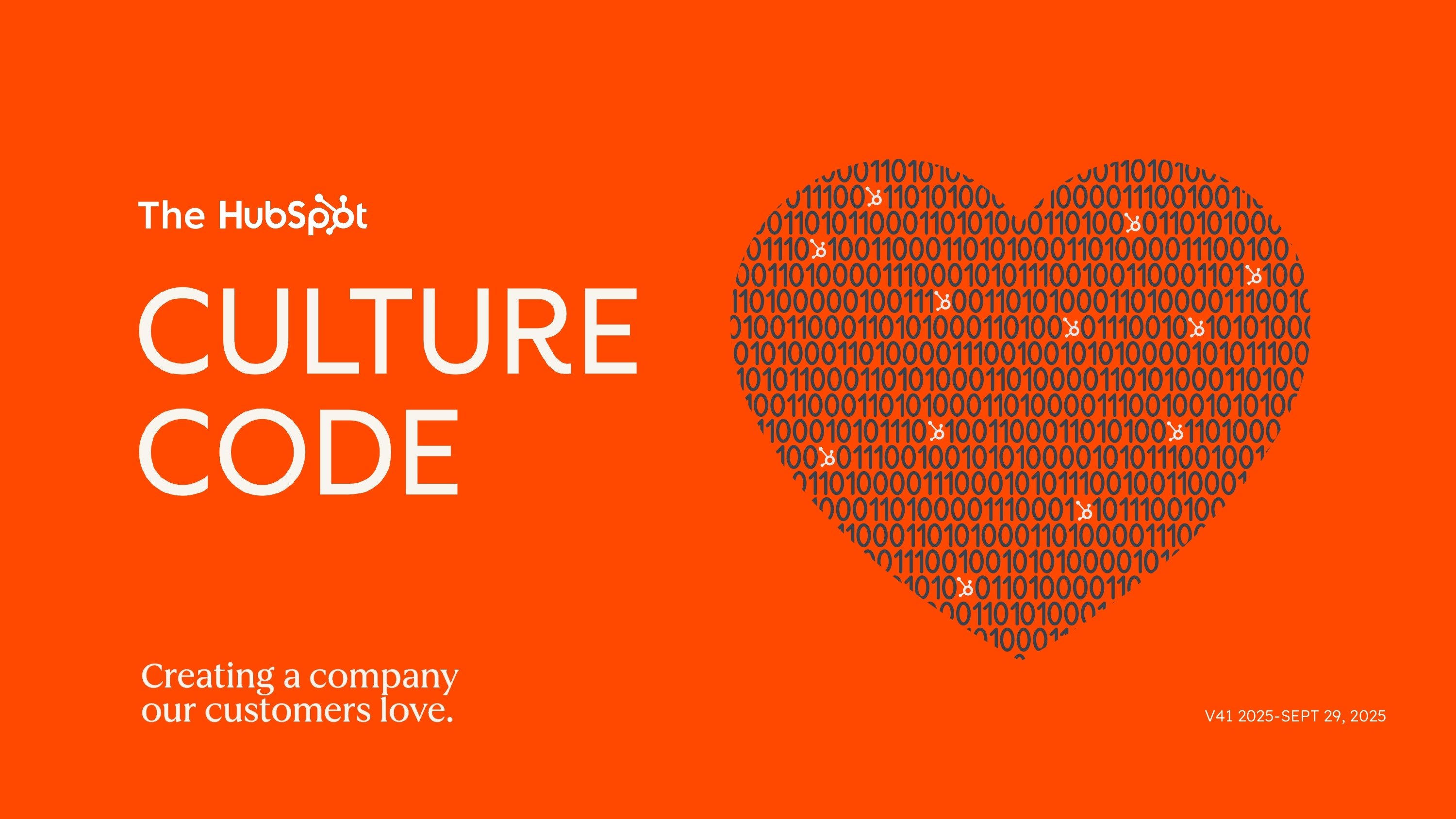And we're grateful to those of you who have hopped on for the ride. We thought it could be interesting and possibly even useful to offer up this inside look at HubSpot and the people behind it. What do we believe? What makes us tick?
The answers to those questions (and more!) are in the mega-slide-deck included above. The document has evolved and expanded over several years into this latest version. We hope you like it and will share it.
HubSpot Culture
HubSpot culture is driven by a shared passion for our mission and metrics. It is a culture of amazing, growth-minded people whose values include using good judgment and solving for the customer. Employees who work at HubSpot have HEART: Humble, Empathetic, Adaptable, Remarkable, Transparent.
HubSpot Culture Code Highlights
- Culture is to recruiting as product is to marketing.
- Whether you like it or not, you're going to have a culture. Why not make it one you love?
- Solve For The Customer -- not just their happiness, but also their success.
- Power is now gained by sharing knowledge, not hoarding it.
- "Sunlight is the best disinfectant." -Louis Brandeis
- HubSpot has a no-door policy, where everyone has access to anyone in the company.
- You shouldn't penalize the many for the mistakes of the few.
- Results should matter more than when or where they are produced.
- Influence should be independent of hierarchy.
- Great people want direction on where they're going -- not directions on how to get there.
- "Better a diamond with a flaw than a pebble without."
- We'd rather be failing frequently than never trying.
---
We hope you found the deck useful. If you'd like to reach out or provide feedback, you can find me on twitter @dharmesh.
Company Culture
.png?width=112&height=112&name=Image%20Hackathon%20%E2%80%93%20Horizontal%20(15).png)


.png)